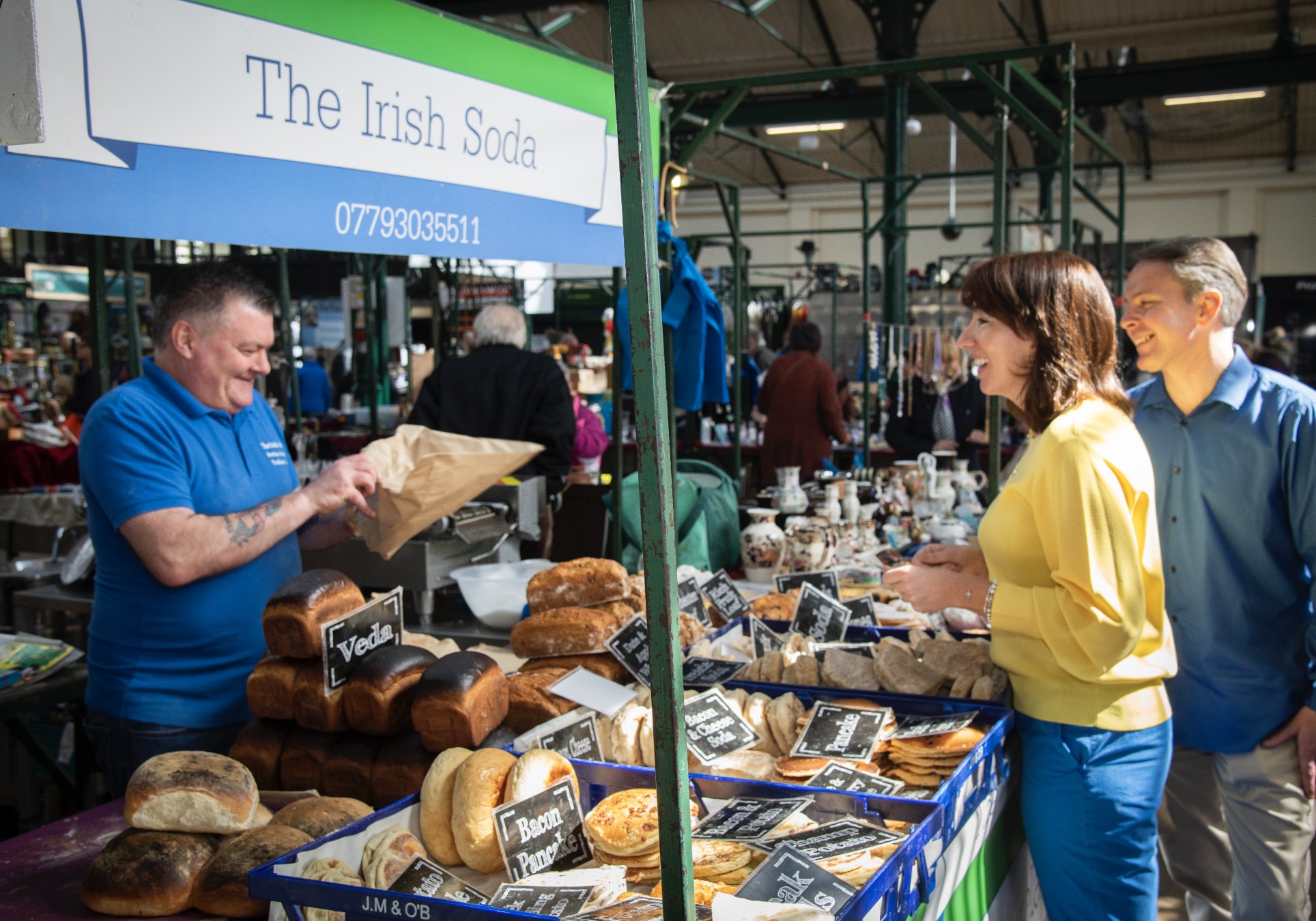Northern Ireland’s capital has history, hospitality and a whole lot of heart.
Belfast is often in Dublin’s shadow. As the capital of Northern Ireland, Belfast was once the centre of political conflict. Since The Good Friday Agreement in 1998, it has pulled off the unthinkable and now has the power to move visitors. Despite the transformation, it is not on the tourist trail in the same vein as Berlin. So, if you want to go off the beaten track, you will be rewarded with a rich history, warm hospitality and stories of the human spirit’s resilience.
Northern Ireland is part of the United Kingdom, and Belfast is home to more than 670,000 people. The residents included CS Lewis, George Best, Kenneth Branagh and Van Morrison. Belfast feels like a community in a city and it’s common for locals to strike up a conversation. Here’s how to follow in the footsteps of hundreds of years of history in 24 hours.
Morning
Titanic Hotel Belfast, Drawing Office Two
What do the star liners Britannic, Olympic and Titanic have in common? They were all designed in the Titanic Hotel Belfast, Drawing Office Two. After reopening in 2017, it is now home to a hotel and restaurant. The Drawing Office Two boasts an impressive three-storey, high barrel-vaulted ceilings and is the only surviving example of this type of architecture in the world. Look out for the black and white photos on the wall of Titanic’s construction. The Wolff Grill serves breakfast, which includes a hot and cold buffet and an a la carte menu.

Titanic Experience
We dare you not to get teary eyed at The Titanic Experience. After opening in 2012, the world-class exhibition has welcomed more than eight million visitors. The building is located where the ship was designed, built and launched. The state-of-the-art technology brings to life the sights, sounds and smells of the ship. The most heartbreaking room is The Sinking, which recounts the 1912 sinking in stark detail. The exhibit includes transcripts from the ship’s calls for help and the names of all of the passengers on board. Plus, the rare artefacts range from an original deck chair to Wallace Henry Hartley’s violin.

Afternoon
St George’s Market
St George’s Market is one of Belfast’s oldest attractions. Dating back to 1890, the market is open from Friday to Sunday, and it is best to arrive early. The market boasts local, continental and speciality foods, including meat, fish, cheese, coffee beans and tapas. Stock Kitchen and Bar is on the first floor and offers a view of the market. The menu includes spectacular seafood, from Carlingford Oysters to Seared Scallops. When you are done, follow the long line to the crêpe station, and order the Nutella and strawberry pancake for dessert.

Clonard Monastery
Catholic Priest, Alec Reid, played a pivotal role in Northern Ireland’s peace process. He worked in Clonard Monastery for 40 years, which is a grand gothic church that dates back to 1890. The architectural gem is in a significant spot between Catholic National Falls Road and the Protestant Loyalists Shankill Road. It was during the Troubles that Alec’s face became famous – when a British soldier was murdered by a mob, he was photographed kneeling over the bloodied body and performing the last rites.

Peace Wall Belfast
More than 20 miles of Peace Walls can be found in Northern Ireland, which aims to minimise violence between communities. The walls largely separate two neighbourhoods: the Irish Republicans and Nationalist Catholics, and the British Loyalists and Unionist Protests. Gates across Falls Road and Shankill Road are closed in the evening. It is well worth coming during the day and marvelling at the murals, which are filled with political messages and tell a tale of two cities. If you want to get a first-hand account, Political Tour-Conflicting Stories run walking tours, which are carried out by former political prisoners.

Queen’s University Belfast
Queen’s University Belfast is Northern Ireland’s leading education establishment. Founded in 1810, the alumni ranges from politicians to poets – a Nobel Prize winner, no less. On the grounds, there is a bust to Senator George J. Mitchell, who was the architect behind the Good Friday Agreement. Bill and Hillary Clinton also spoke at the university to mark 25 years since the agreement.

Evening
The Dark Horse
Belfast’s Commercial Court is a colourful courtyard, which is Insta-ready with neon umbrellas. Pass the plaques and pictures that share hard and soft history – Ireland’s Snow Patrol first played at Duke of York. The Dark Horse’s outdoor terrace is a hidden gem. The walls are covered with must-see murals, which offer an insight into the political stories of the day. On our visit, we spotted the United Kingdom’s politicians Boris Johnson and Rishi Sunak in boxing gloves.

The Europa Hotel
The Europa Hotel has an unexpected claim to fame – it declares that it is most bombed hotel in the world. During the Troubles, it had 36 bomb attacks and was locally known as The Hardboard Hotel. Since then, it earned a cult status among travellers. Proving that it’s safe to stay, former President Bill Clinton and former Secretary of State Hillary Clinton once stayed in a suite, which was later renamed The Clinton Suite. Dinner is served in the Causerie, and drinks are available at the Piano Lounge. And, as the Irish say, oiche mhaith (goodnight).

GO: Visit https://www.tourismireland.com for more information.
The post Titanic to The Troubles: A 24-hour guide to Belfast’s history appeared first on FACT Magazine.
